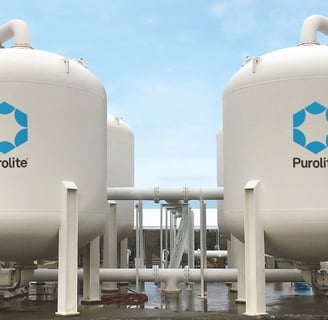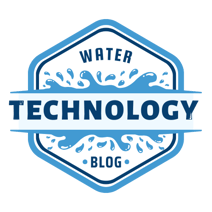The Economics of Removing PFAS from Drinking Water: Costs, Effectiveness, and Challenges
Per- and polyfluoroalkyl substances (PFAS), often dubbed "forever chemicals" due to their persistence in the environment, have become a pressing concern in drinking water supplies worldwide. These synthetic compounds, used in products like non-stick cookware, firefighting foams, and water-repellent fabrics, have been linked to health risks including cancer, immune system dysfunction, and developmental issues. As communities grapple with PFAS contamination, the economics of removing these chemicals from drinking water—along with the effectiveness of removal technologies at varying contamination levels—has become a critical topic. This blog post explores the costs, methods, and challenges of PFAS remediation, with a focus on how effectiveness varies with PFAS concentrations.
WATER PURIFICATION
6/2/20255 min read


PFAS contamination is widespread, with detectable levels found in drinking water sources across the United States, Europe, and beyond. The U.S. Environmental Protection Agency (EPA) has set health advisory levels for certain PFAS compounds, such as PFOA and PFOS, at 70 parts per trillion (ppt) combined, though some states have adopted stricter limits (e.g., 8-20 ppt for individual compounds). Contamination levels vary widely, from low (10-100 ppt) to extremely high (thousands of ppt) near industrial sites or military bases where PFAS-containing firefighting foams were used.
The economic burden of PFAS removal depends on the contamination level, the scale of the water system, and the chosen treatment technology. Let’s break down the primary methods, their effectiveness, and the associated costs.
PFAS Removal Technologies: Effectiveness by Concentration
Several technologies are effective at removing PFAS from drinking water, but their performance and cost-effectiveness vary depending on PFAS concentration, water volume, and co-contaminants. Below are the most common methods:
1. Granular Activated Carbon (GAC)
How it Works: GAC filters adsorb PFAS molecules onto a porous carbon surface.
Effectiveness:
Low Concentrations (10-100 ppt): GAC is highly effective for low to moderate PFAS levels, removing 90-99% of PFOA and PFOS. It performs best for longer-chain PFAS (e.g., PFOA, PFOS) but is less effective for short-chain compounds like PFBS.
High Concentrations (>1,000 ppt): At higher concentrations, GAC beds saturate faster, requiring more frequent replacement. Effectiveness remains high initially but drops as adsorption sites fill up.
Limitations: GAC struggles with short-chain PFAS and requires regular media replacement, which can reduce cost-effectiveness at high concentrations.
2. Ion Exchange (IX) Resins
How it Works: IX resins selectively bind PFAS molecules, exchanging them for harmless ions in the water.
Effectiveness:
Low Concentrations: IX is highly effective, often achieving >99% removal for both long- and short-chain PFAS, outperforming GAC for short-chain compounds.
High Concentrations: IX maintains high removal rates even at elevated PFAS levels, but resin saturation occurs faster, increasing operational costs.
Limitations: Resins are more expensive than GAC, and disposal of PFAS-laden resin requires careful handling to avoid environmental release.
3. Reverse Osmosis (RO) and Nanofiltration (NF)
How it Works: RO and NF use semi-permeable membranes to filter out PFAS and other contaminants.
Effectiveness:
Low Concentrations: RO achieves near-complete removal (>99%) of all PFAS types, making it a robust option for trace levels.
High Concentrations: RO remains highly effective, but high PFAS levels can foul membranes, reducing lifespan and increasing maintenance costs.
Limitations: RO produces a concentrated waste stream (brine) containing PFAS, which requires specialized disposal. It’s also energy-intensive and removes beneficial minerals, necessitating post-treatment.
4. Emerging Technologies
Technologies like advanced oxidation processes (AOPs) and plasma-based treatment are being developed to destroy PFAS rather than just remove them. These methods show promise for high concentrations but are not yet widely deployed due to high costs and technical challenges.
Economic Considerations
The cost of PFAS removal varies widely based on the technology, water system size, and contamination level. Below is a breakdown of key economic factors:
Capital Costs
GAC: $0.5-2 million for a small to medium-sized water treatment plant (1-10 million gallons per day). Costs scale with system size.
IX: $1-3 million for similar systems, driven by the higher cost of resin materials.
RO/NF: $2-5 million due to complex equipment and infrastructure needs.
Emerging Technologies: Not widely commercialized, but pilot projects suggest costs 2-10 times higher than GAC or IX.
Operating Costs
GAC: $0.02-0.10 per 1,000 gallons treated, depending on media replacement frequency. High PFAS concentrations increase costs due to faster saturation (e.g., every 3-6 months vs. 1-2 years at low concentrations).
IX: $0.05-0.20 per 1,000 gallons. Resin regeneration or replacement is costlier but less frequent at low concentrations.
RO/NF: $0.10-0.50 per 1,000 gallons, driven by energy use and membrane maintenance. High concentrations increase fouling, raising costs.
Disposal Costs: PFAS-laden media (e.g., spent GAC or IX resin) and RO brine require incineration at high temperatures (>1,000°C) or landfilling in specialized facilities, costing $500-2,000 per ton.
Scale and Location
Small Systems: Rural or small communities face higher per-capita costs due to limited economies of scale. For example, a small system serving 1,000 people might spend $1-2 per 1,000 gallons, while a large municipal system might spend $0.10-0.50.
High-Contamination Areas: Sites with PFAS levels >1,000 ppt (e.g., near military bases) require more frequent media replacement or larger treatment systems, increasing costs by 20-50%.
Long-Term Costs
The persistence of PFAS means remediation is not a one-time expense. Ongoing monitoring, maintenance, and media replacement can cost utilities $100,000-$1 million annually, depending on system size and contamination severity. Legal settlements, like the $12.5 billion from 3M and DuPont in the U.S., may offset costs for some municipalities, but many communities bear the burden directly.
Challenges and Trade-Offs
Varying PFAS Types: Thousands of PFAS compounds exist, and most technologies are optimized for PFOA and PFOS. Short-chain PFAS, increasingly common in newer formulations, are harder to remove with GAC and require costlier IX or RO systems.
Regulatory Uncertainty: Stricter regulations (e.g., EPA’s proposed 4 ppt limit for PFOA) increase treatment costs, as systems must achieve lower detection limits. This could drive adoption of more expensive technologies like RO.
Equity Concerns: Small, low-income communities face disproportionate costs, often lacking the tax base or federal funding to implement advanced systems. Point-of-use filters (e.g., under-sink RO units costing $200-500) are a temporary solution but shift costs to households.
Waste Management: PFAS removal doesn’t eliminate the problem—it concentrates PFAS in spent media or brine. Safe disposal is costly and risks reintroducing PFAS into the environment if mismanaged.
Effectiveness at Different PFAS Levels: A Closer Look
Low Concentrations (10-100 ppt): GAC and IX are cost-effective, with GAC being the cheaper initial option. RO is overkill unless other contaminants are a concern. Removal rates are typically >95%, meeting most regulatory standards.
Moderate Concentrations (100-1,000 ppt): IX and RO become more attractive due to their consistent performance, though GAC remains viable with frequent media replacement. Costs rise due to increased maintenance.
High Concentrations (>1,000 ppt): RO and IX are preferred for their reliability, but costs escalate due to frequent media replacement or membrane fouling. Emerging technologies like AOPs may become viable as they mature.
The Path Forward
The economics of PFAS removal hinge on balancing effectiveness with cost. For low to moderate contamination, GAC offers a cost-effective starting point, while IX and RO are better suited for higher concentrations or stricter regulations. Emerging technologies could revolutionize PFAS destruction but remain prohibitively expensive for now.
Policymakers and utilities must address equity, ensuring small communities aren’t left behind. Funding from legal settlements, federal grants, or polluter-pays models can help offset costs. Meanwhile, ongoing research into PFAS destruction and source control (e.g., banning non-essential PFAS uses) is critical to reducing future contamination.
Ultimately, the cost of inaction—health impacts, environmental damage, and loss of public trust—far outweighs the investment in clean water. As we confront the PFAS challenge, strategic investments in proven technologies, paired with innovation and equitable funding, will be key to ensuring safe drinking water for all.
Note: Cost estimates are based on industry reports and studies up to 2025. Local factors like energy prices, labor costs, and water chemistry can affect actual costs. For the latest data, utilities should consult with environmental engineers or refer to EPA and state guidelines.
